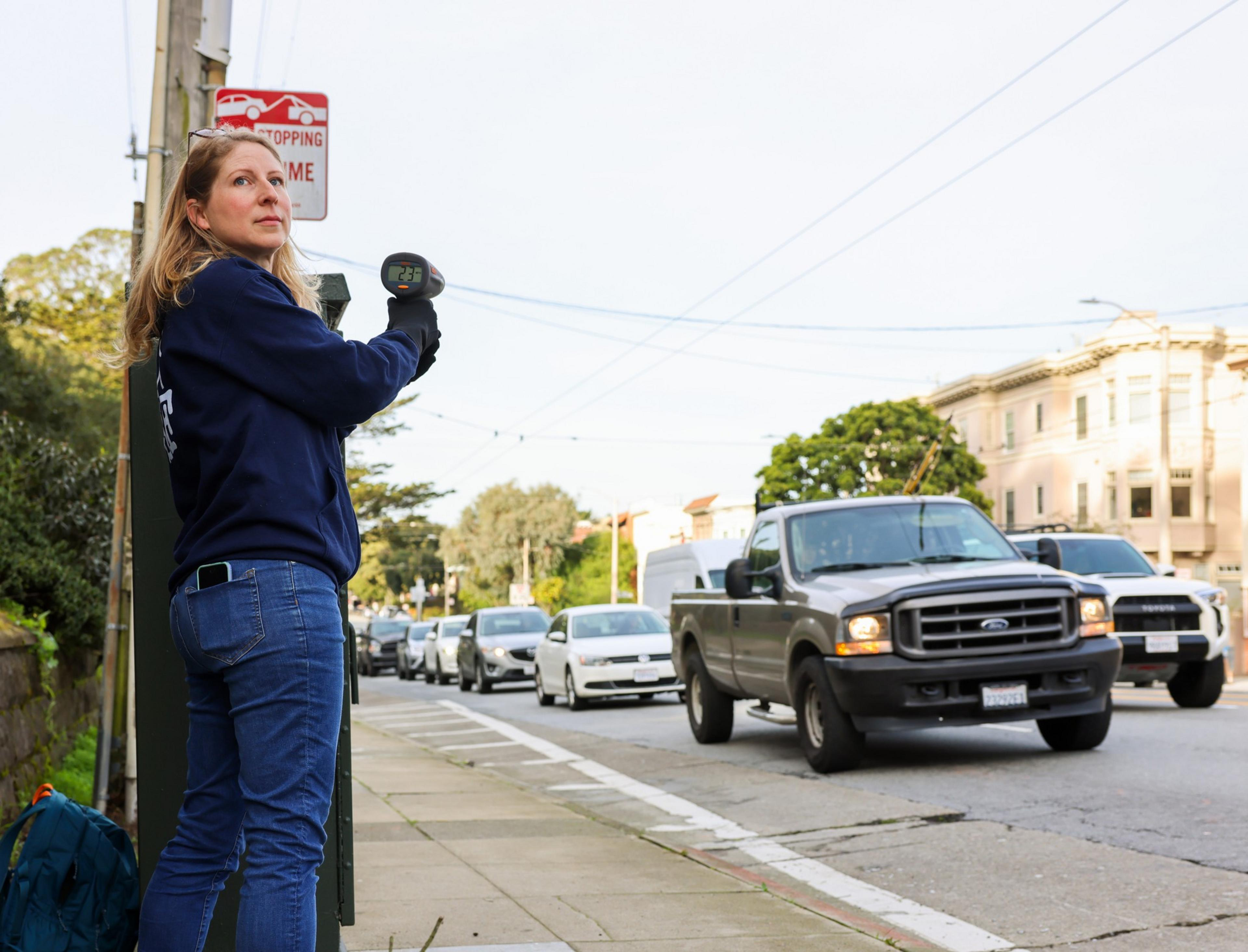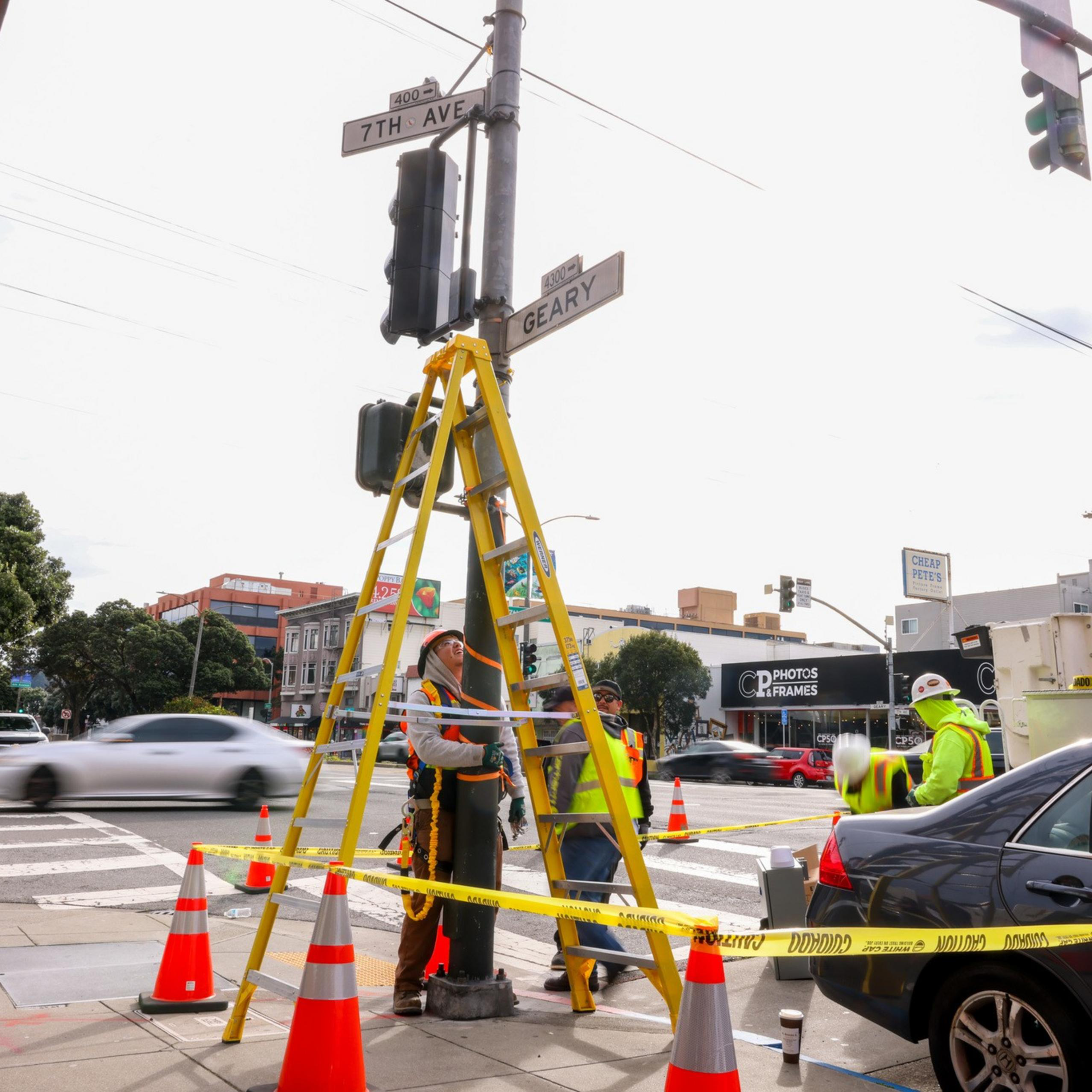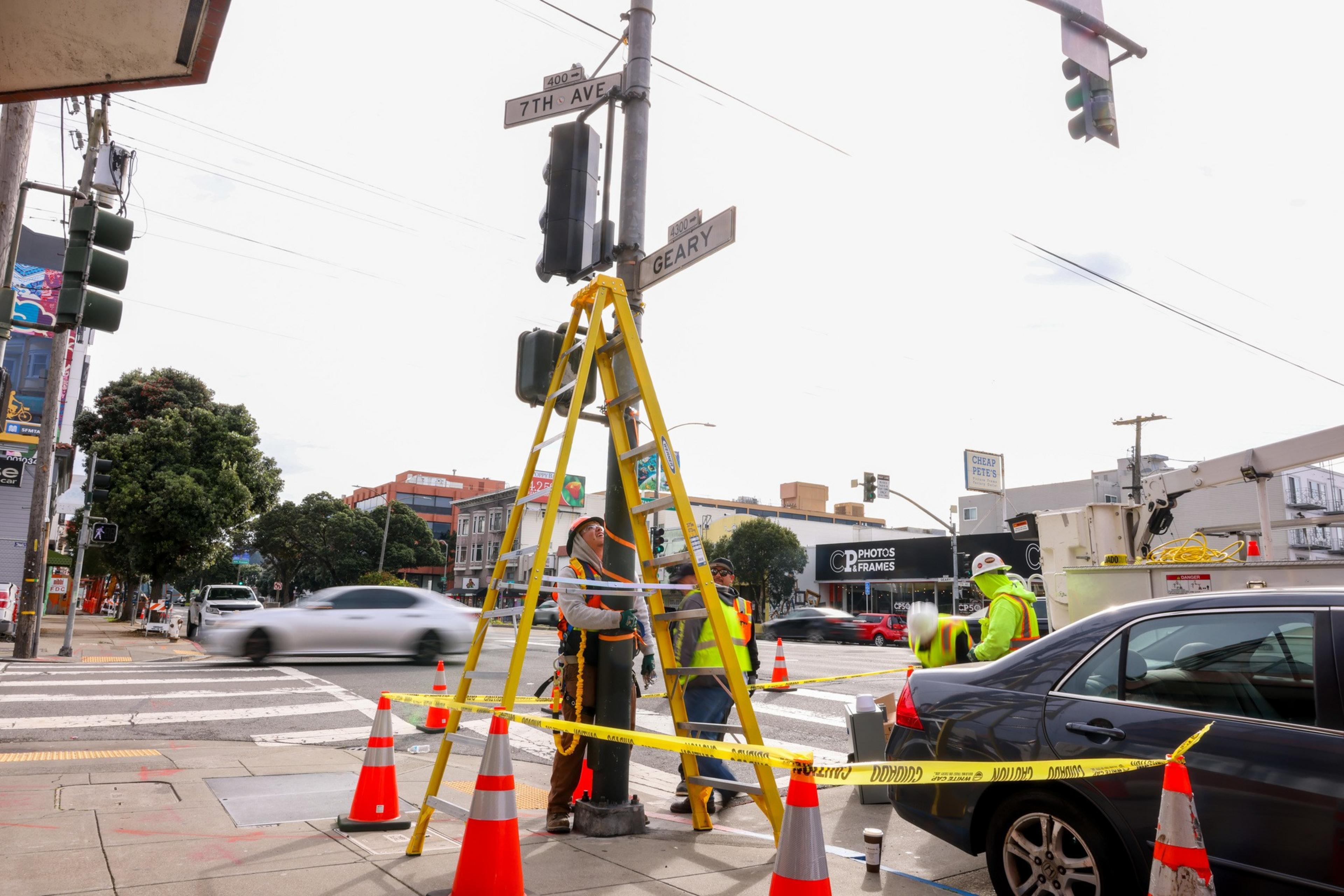Hiding behind an SUV parked on Fulton Street, Marta Lindsey of WalkSF pointed a speed gun at rush-hour traffic between Arguello Boulevard and Second Avenue.
“Thirty-eight, 39, 40, 37, 36, 38,” Lindsey said before spotting a shamelessly speedy driver. “Forty-five!”
The posted speed limit was 25 miles per hour, but it’s clear that doesn’t matter to many drivers.
That might be about to change. With the support of activists like Lindsey, the San Francisco Municipal Transportation Agency is betting that “automated speed safety cameras (opens in new tab),” which will begin operating next month, will drastically change behavior on streets. “Speed cameras are going to get us back to where people take care of each other,” Lindsey said.
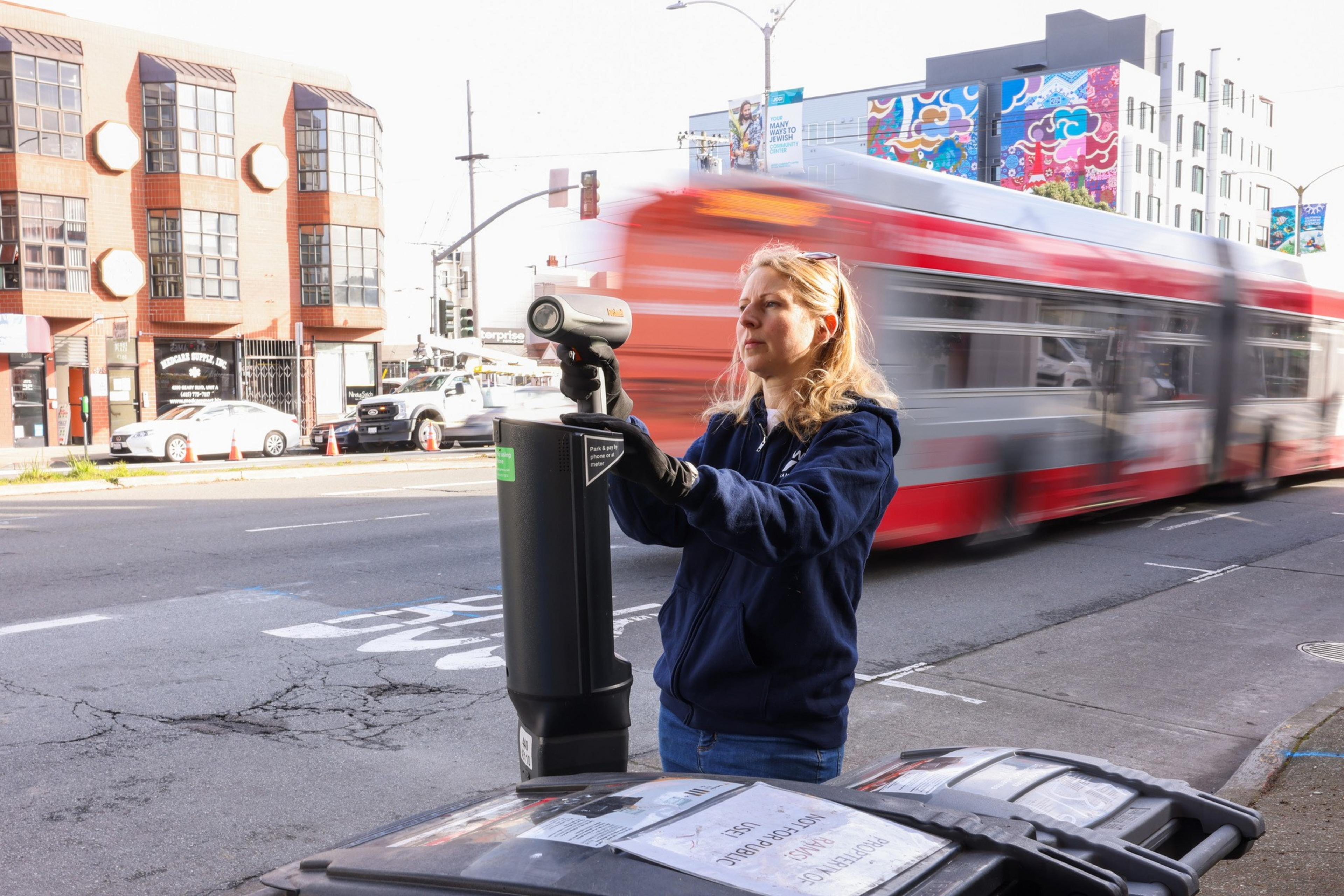
In theory, given how common speeding is in a city where traffic enforcement has fallen far below historic levels, the system could quickly serve up tens of thousands of tickets, generating hundreds of millions of dollars in fines.
In practice, that’s not likely for several reasons. For starters, proponents of the cameras see them primarily as a tool for deterrence, not enforcement, pointing to precipitous drops in speeding in places where they’ve been deployed, such as New York.
There’s also the fact that the system, despite its name, isn’t truly automated. While the cameras can record license plates of speeders, human participation is required to issue tickets.
But even if neither of the above were true, fines for speeding would do little to solve San Francisco’s grim budget problems, since the revenue can, by law, be used only for strictly circumscribed purposes.
How SF’s speed cameras work
Drivers who are caught speeding by the new cameras will receive warnings starting in March; fines will begin in May. According to an SFMTA study, approximately 42,210 drivers break the speed limit by 11 mph or more every day in just one of the 33 locations where the cameras will be installed, with around 7,000 more going 16 to 25 mph over the limit.
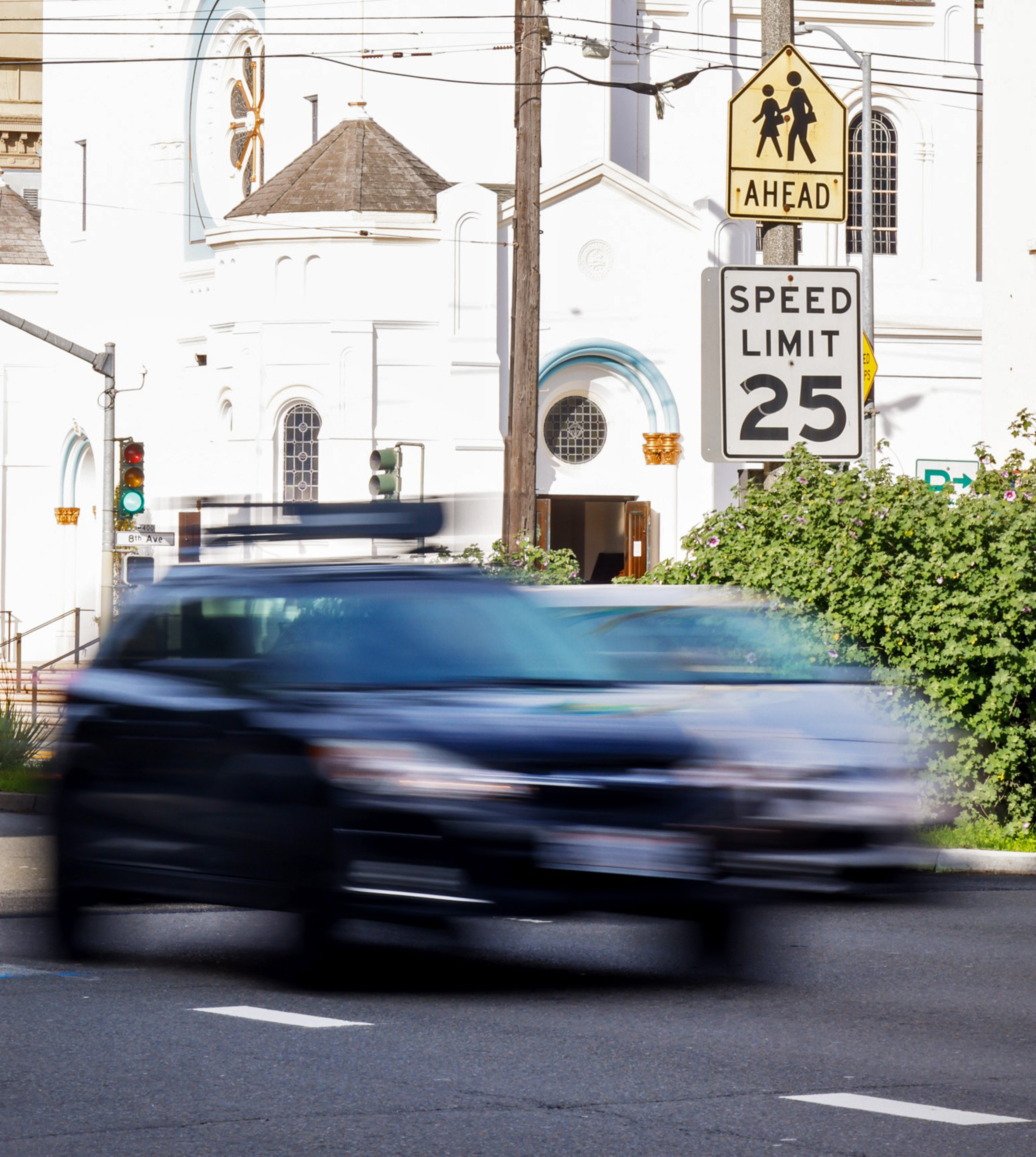
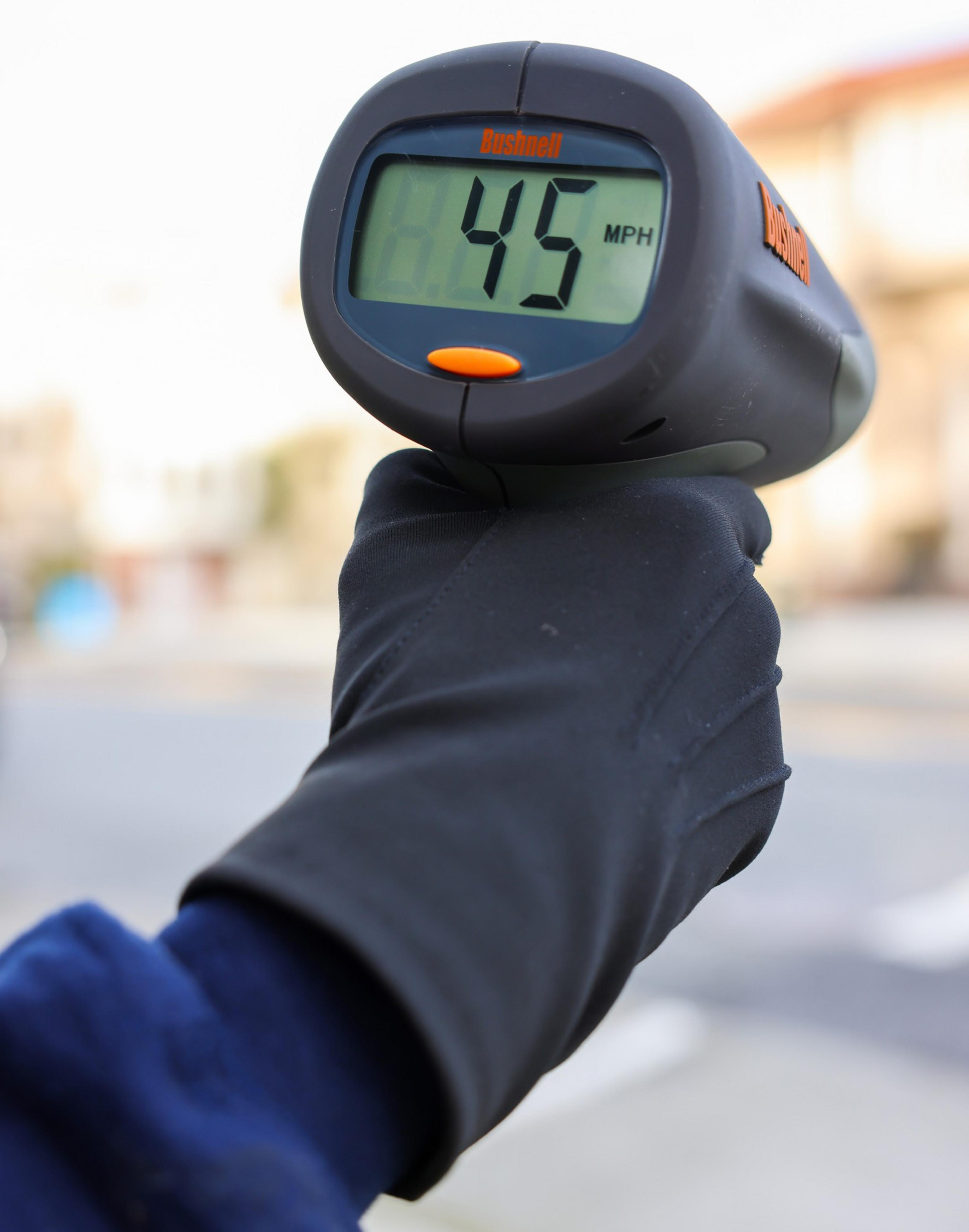
To run its network of cameras, the city has hired contractor Verra Mobility (opens in new tab). The company, which also runs New York’s much larger network, was sued in 2020 (opens in new tab) for overbilling that city for unnecessary work, eventually settling for $1.3 million (opens in new tab).
San Francisco plans to spend no more than $7.43 million over a six-year term, an SFMTA spokesperson said. Representatives for Verra did not respond to a request for comment.
“The vendor was chosen through a competitive process,” SFMTA spokesperson Michael Roccaforte said. “Verra Mobility scored the highest through this process.”
The SFMTA could hypothetically rake in as much as $2 million a day and $700 million within a year from speeding tickets, according to an analysis by The Standard.
But not every driver caught by the cameras will be ticketed, because state law says each citation must be checked by the SFMTA.
“It is not possible to issue 42,000 tickets a day,” Roccaforte said. “Based on two minutes per citation issuance, this would require the equivalent of 1,400 hours per day of staff time to review. Clearly, this is not possible. [This] would equate to 200 full-time employees to process the tickets.”
Despite the SFMTA’s deficit, which could balloon to more than $300 million by 2026, state law doesn’t allow the agency to use excess revenue to replenish funding for struggling train or bus lines.
The revenue generated from speed cameras can be used for road safety measures, such as Slow Streets or “neckdowns.” If there is leftover cash three years after collection, the money can go toward the state’s Active Transportation Program (opens in new tab), which funds walking, biking, and other non-motorized forms of transportation.
“We’re not looking at this program to fill a funding gap,” Roccaforte told The Standard in an email. “Instead, we want drivers to slow down.”
Those restrictions may not make sense to transit riders, who are feeling frustrated with the SFMTA due to potential bus service cuts.
“I would be concerned if they aren’t using any revenue for that purpose. I would like to see some of it go toward the deficit,” said Albert Nelson, who often rides the N Judah.
Will the cameras curtail speeding?
The SFMTA says the goal of the cameras is to dramatically reduce speeding, rather than generate revenue through citations. Expressing confidence in the cameras’ effectiveness, the agency referred The Standard to a study conducted in New York City showing that speeding there fell by 73% within 18 weeks.
In 2023, New York collected approximately $309 million in fines from nearly 6 million speed camera citations. Its network had 2,277 cameras, far more than will be installed in San Francisco.
From 2014 to 2023, New York made more than $400 million in net revenue from speed cameras, while spending $650 million to install and operate them.
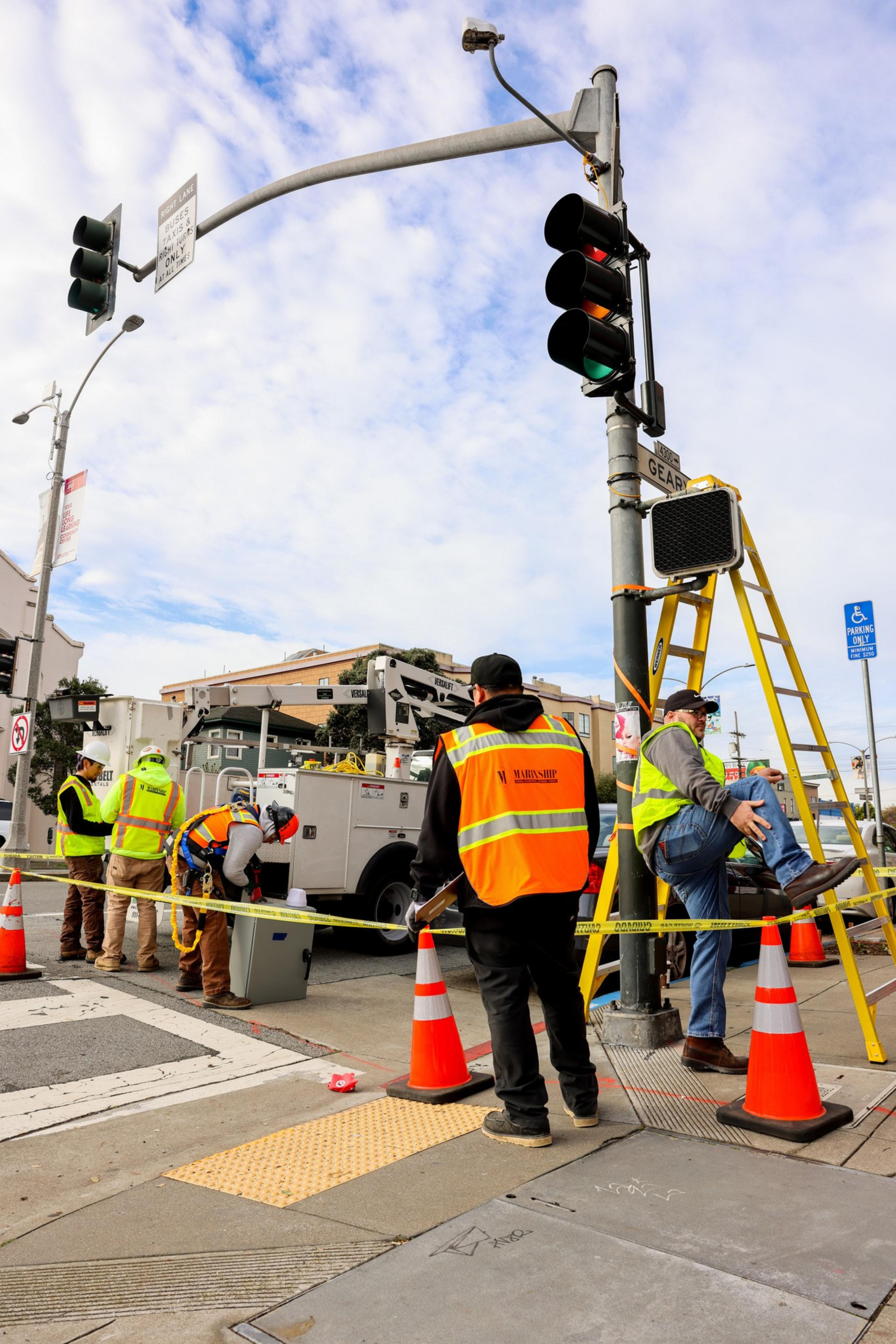
In San Francisco, speed cameras will be installed in places (opens in new tab) where reducing posted speed limits, increasing lane widths, decreasing the number of lanes, adding speed bumps, and other safety measures are either not practical or have proved ineffective.
“Automated speed enforcement is the last thing we have left in our toolkit,” said Roccaforte.
Safe streets activists say the cameras are the best method to reduce speeding and the carnage it can produce. Data from New York City show that serial speeders are five times more likely than typical motorists to be involved in serious crashes.
SF recorded 41 traffic deaths (opens in new tab) in 2024 — more than any year since 2007. While some have put the blame on pedestrians or cyclists, Lindsey and other advocates believe the main issue is speeding.
“It’s antisocial, it’s cutthroat, it’s out of control,” Lindsey told The Standard, referring to the state of driving in the city. “It’s not okay for drivers to treat our streets like highways. This is a city of neighborhoods.”
